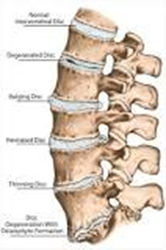Which of the following is true regarding the physiology of an open pneumothorax?
Air cannot pass freely into the thoracic cavity through a chest wound.
The air is trapped when it enters the cavity.
Air moves in and out of a wound in the chest wall.
There are no audible sounds in an open pneumothorax.
The Correct Answer is C
Choice A Reason:
Air cannot pass freely into the thoracic cavity through a chest wound is incorrect because air can indeed pass freely into the thoracic cavity through the chest wound in an open pneumothorax.
Choice B Reason:
The air is trapped when it enters the cavity is incorrect because the characteristic feature of an open pneumothorax is that air is not trapped; rather, it enters the thoracic cavity with each inhalation and exits with each exhalation through the chest wound.
Choice C Reason:
Air moves in and out of a wound in the chest wall is correct. In an open pneumothorax, also known as a "sucking chest wound," air can freely move in and out of the thoracic cavity through a wound in the chest wall. This occurs due to the creation of a communication pathway between the external environment and the pleural space, typically caused by a penetrating injury to the chest.
Choice D Reason:
There are no audible sounds in an open pneumothorax is incorrect because in an open pneumothorax, there may be audible sounds associated with the movement of air in and out of the wound, such as a sucking or bubbling sound, depending on the size and location of the wound. These sounds can be clinically significant and aid in the diagnosis of an open pneumothorax.
Nursing Test Bank
Naxlex Comprehensive Predictor Exams
Related Questions
Correct Answer is ["A","B","D","E"]
Explanation
Choice A Reason:
Memory loss is correct. Memory loss can occur in individuals with PML due to damage to the white matter of the brain caused by the JC virus infection. This damage can affect cognitive function, including memory.
Choice B Reason:
Clumsiness is correct. Clumsiness or lack of coordination is a common neurological symptom of PML. It can result from damage to areas of the brain responsible for motor function and coordination.
Choice C Reason:
Tardive dyskinesia is incorrect. Tardive dyskinesia is a movement disorder characterized by involuntary, repetitive movements, often involving the face, lips, tongue, and limbs. While tardive dyskinesia can occur as a side effect of certain medications, it is not typically associated with PML.
Choice D Reason:
Seizures is correct. Seizures can occur in individuals with PML due to the involvement of the brain's white matter by the JC virus infection. Seizures may present as sudden, uncontrolled movements, altered consciousness, or other neurological symptoms.
Choice E Reason:
Vision difficulty is correct. Vision difficulties, including blurred vision, visual field deficits, and other visual disturbances, are common manifestations of PML. Damage to the optic nerves or areas of the brain involved in visual processing can result in vision difficulties.
Correct Answer is ["B","C","D"]
Explanation
Choice A Reason:
Hyponatremia is incorrect. Hyponatremia refers to low sodium levels in the blood and is not typically associated with degenerative disc disease. This finding is unrelated to the pathophysiology of DDD.
Choice B Reason:
Paresthesia is correct. Yes, paresthesia, which refers to abnormal sensations such as tingling, numbness, or burning, can develop with degenerative disc disease. Nerve compression or irritation due to disc degeneration can lead to paresthesia in the affected area, typically radiating along the nerve pathway.
Choice B Reason:
Foot drop is correct. Yes, foot drop can develop with degenerative disc disease, especially if the condition leads to nerve compression or damage in the lumbar spine (lower back). Foot drop refers to difficulty lifting the front part of the foot due to weakness or paralysis of the muscles involved in dorsiflexion.
Choice D Reason:
Intermittent pain is correct. Yes, intermittent pain is a hallmark symptom of degenerative disc disease. Pain may vary in intensity and may worsen with certain movements or activities. Individuals with DDD may experience episodes of acute pain, as well as chronic, persistent discomfort.

Whether you are a student looking to ace your exams or a practicing nurse seeking to enhance your expertise , our nursing education contents will empower you with the confidence and competence to make a difference in the lives of patients and become a respected leader in the healthcare field.
Visit Naxlex, invest in your future and unlock endless possibilities with our unparalleled nursing education contents today
Report Wrong Answer on the Current Question
Do you disagree with the answer? If yes, what is your expected answer? Explain.
Kindly be descriptive with the issue you are facing.
